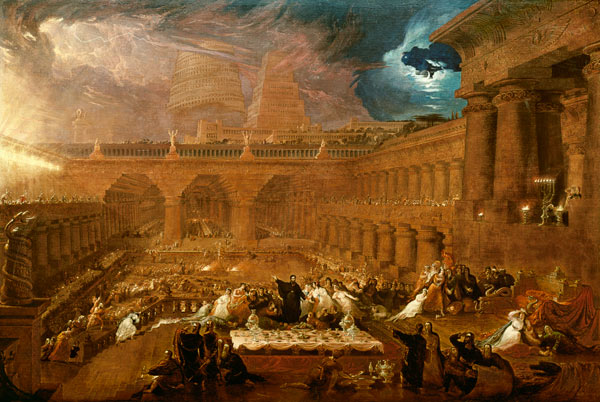According to media theorist Marshall Mcluhan, we are living in the 'late age of print', an age which began around 1450 with the invention of Guttenberg's printing press. Guttenberg's printing press paved the way for a more enlightened society, allowing for new ways to easily share and distribute information through the printed word. Before the invention of the printing press, books had to be hand written, often the luxury of the bourgeious elite. This democratisation of information and the ability to reproduce great works en mass, changed the art world forever, bringing art to the masses.
Up until this democratisation of print, art was seen as property of the elite, commissioned by the elites and aristocracy of society, often depicting them in a positive light as a way of consolidating their power. Industrialisation brought on by the industrial revolution gave disillusioned members of the working class a means of producing art and print. Thousands moved from rural areas to the inner cities where the industry was, and this condensation of population lead to a condensation of culture. Disillusionment with bourgeouis institutions such as the Royal Academy of Arts leads to the working classes developing their own culture, much to the dismay of the upper classes and a popular culture of people's art, political satire, chartism and various social movements begins to emerge.
Real change came with the establishment of the School of Design- Somerset House in 1836, a school of 'design' rather than art, that taught art in the context of mass popular culture rather than in the culture of the traditional elite. This development can be seen as a part of a wider cultural shift at a time where entrepreneurial middle class capitalists were at the centre of government rather than the traditional royal elites.
The ruling class at this time felt threatened by these developments, as they saw themselves as the guardians of culture. To elitists like poet and cultural critic Matthew Arnold, working class culture was a threat to traditional hierarchies. Arnold saw art as 'the study of perfection', while working class culture was seen as 'anarchic'. Many in the elite of society wanted culture to be disinterested, unquestioning of the status quo, for example through the study of abstract concepts such as beauty. At this time for the elites, culture is about pacifying and policing the working class masses, an ideological weapon of the ruling class. Working class culture in the 19th century, while often dismissed by the ruling class, was seen as culturally relevant to the masses and could also be used as a weapon by the working class to challenge the status quo.
This elitism carried on through to the 20th Century, with literary critics such as F.R Leavis who saw the time as a period of cultural decline due to the proliferation of mass culture vs 'proper culture'. Marxist philosopher and cultural critic Walter Benjamin wrote about 'The Work if Art in the Age of Mechanical Reproduction' (1936). Benjamin saw art as a weapon to challenge concepts associated with Fascism and states that Technological Reproduction of art removes...
Creativity
Genius
Eternal Value
Tradition
Authority
Authenticity
Autonomy
Distance Mystery
All of these disparate elements make up the aura of a work. Benjamin argues that this sort of way of thinking is what makes fascism possible, as it makes the downtrodden accept their circumstances and be subservient to an elite. By removing the aura form art, by reprinting it, disseminating and proliferating it, it rejects this authoritarian culture. Print culture is the culture of the people, as it allows them to challenge authority and to rewrite the world. Ultimately, as cultures aura diminished, hierarchical power in culture also diminished.
Print is not usually something I as an animator would usually concern myself with. I prefer to work digitally, as more often than not, animation is produced and distributed primarily on screens. I do however have more than a passing interest in illustrative work and found this lecture to be informative in explaining the history of printed culture. I feel like my animation can learn a lot from Print culture, both aesthetically and culturally. The printed aesthetic is something I do wish to emulate, as there is a distinctly handmade charm to art that is produced using traditional, but more importantly physical techniques and media. I do feel that a lot of animation loses an element of charm and authenticity when it is produced digitally, so maybe by studying print culture and the printed aesthetic, I can seek to rectify that, at least in my own work.



No comments:
Post a Comment